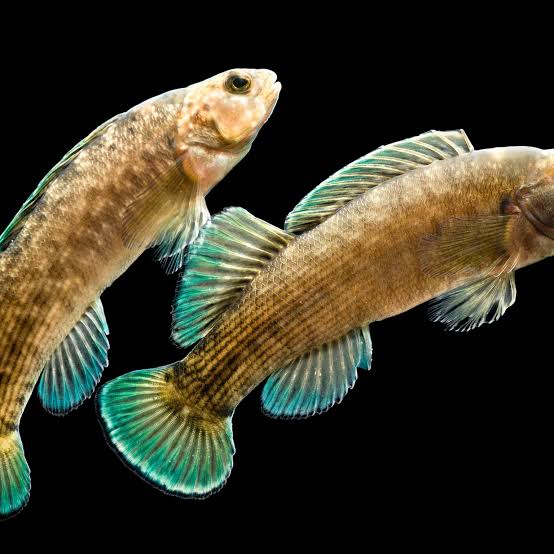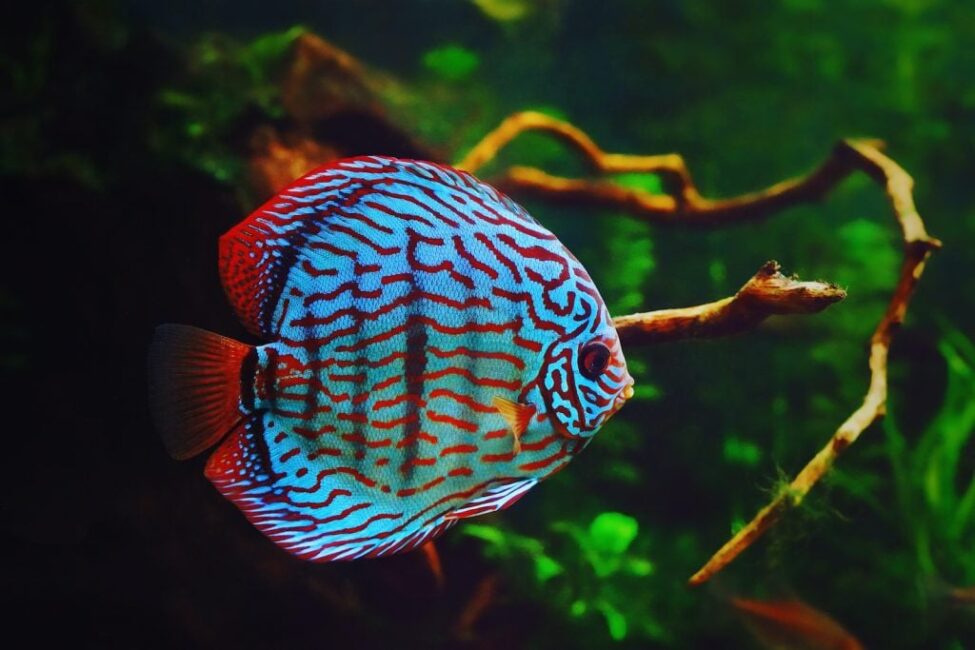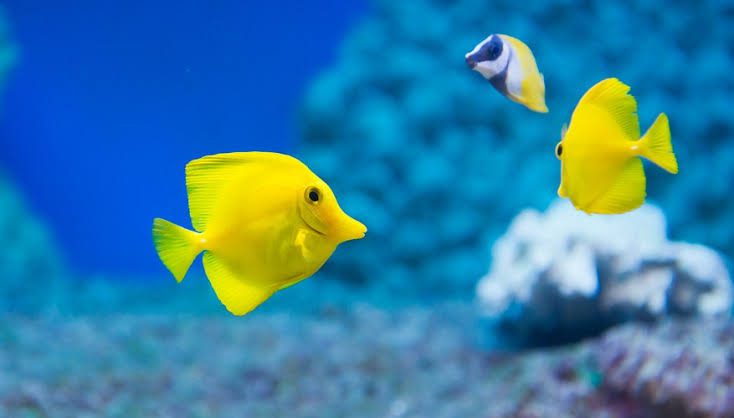Understanding the classification of fish based on their habitats is fundamental to comprehending the intricate dynamics of aquatic ecosystems and is crucial for effective management and conservation practices.
Fish, as a diverse group of aquatic vertebrates, inhabit a wide array of environments, each with its unique set of environmental conditions and resources that influence their distribution, behavior, and survival strategies.
The classification of fishes based on habitat is a foundational aspect of fisheries biology and ecology. It categorizes fish into distinct groups according to the types of aquatic environments they inhabit: freshwater, marine, and estuarine.
These habitat classifications provide insights into the specialized adaptations and ecological roles of different fish species within their respective environments. Freshwater habitats encompass a variety of inland waters such as rivers, lakes, ponds, and streams where the salinity levels are low or negligible.
These environments support a rich diversity of fish species adapted to specific habitat characteristics, including water flow patterns, depth, substrate composition, and vegetation cover.
For example, species like trout, bass, and catfish are commonly found in freshwater ecosystems where they exhibit behaviors suited to the local conditions, such as feeding strategies optimized for available prey and sheltering among submerged vegetation or rocky structures.
Marine habitats, which include oceans and seas, represent vast expanses of saltwater environments characterized by diverse physical and chemical properties. Marine fish species such as tuna, sharks, and cod have evolved a wide range of adaptations to thrive in these dynamic and often challenging ecosystems.
They are influenced by factors such as water temperature gradients, ocean currents, and the availability of prey species, which shape their distribution patterns, migratory behaviors, and reproductive strategies.
Estuarine habitats serve as transitional zones where freshwater rivers meet the salty ocean, creating unique brackish water environments. Estuaries are characterized by fluctuating salinity levels, tidal influences, and nutrient-rich waters, making them highly productive ecosystems.
They support diverse communities of fish species that are adapted to tolerate and utilize the mix of freshwater and marine influences. Species such as salmon, sturgeon, and commercially important shellfish species rely on estuaries for critical life stages such as spawning, nursery grounds for juveniles, and feeding opportunities.
Within each major habitat type, further classifications can be made based on specific environmental preferences and adaptations of fish species. For example, within freshwater habitats, fish may be classified based on their preference for flowing versus still waters, their reliance on specific types of aquatic vegetation or substrate, and their tolerance to temperature fluctuations and oxygen levels.
Understanding these finer distinctions is essential for predicting species distributions, identifying critical habitats, and assessing the vulnerability of species to environmental changes and human impacts.
Why Classify Fish Based on Habitat?

The rationale extends beyond academic interest to practical applications in conservation, management, and sustainable use of aquatic resources.
By identifying the habitat requirements and ecological roles of different fish species, conservationists can prioritize areas for protection, restoration, and habitat enhancement initiatives.
For instance, understanding the critical spawning habitats of endangered species allows conservationists to implement targeted measures to improve habitat quality, mitigate habitat degradation, and support population recovery efforts.
Effective fisheries management also relies heavily on habitat classification and understanding how habitat conditions influence fish behavior, growth rates, reproductive success, and overall population dynamics.
Fisheries biologists and managers use this knowledge to develop and implement sustainable fishing practices that ensure the long-term viability of fish stocks and minimize the impact of harvesting on aquatic ecosystems.
By protecting and managing critical habitats, such as spawning grounds, nursery areas, and feeding grounds, managers can help maintain healthy fish populations and support sustainable fisheries for future generations.
Furthermore, habitat classification plays a crucial role in predicting and mitigating the impacts of environmental changes on fish populations and their habitats. Climate change, pollution, habitat destruction, invasive species, and other anthropogenic stressors can disrupt aquatic ecosystems, alter habitat suitability, and pose significant challenges to fish survival and reproduction.
Understanding how these stressors interact with different habitat types and species-specific requirements allows scientists and managers to develop adaptive management strategies and conservation actions.
For example, restoring riparian vegetation along rivers can improve water quality, stabilize stream banks, and provide shade and organic matter inputs that benefit fish populations. Similarly, implementing measures to reduce nutrient pollution and sedimentation in estuarine habitats can help maintain water quality and preserve critical habitats for commercially and ecologically important fish species.
Read Also: Fish Production and Management Guide
10 Classification Of Fishes Based On Habitat

1. Freshwater Fish
Habitat: Freshwater fish inhabit bodies of water with low salinity, such as rivers, streams, lakes, and ponds. These environments typically have fluctuating water temperatures and varying currents depending on the geography and climate.
Characteristics: Adapted to freshwater conditions, these fish often exhibit a range of sizes and shapes. They may have streamlined bodies for efficient movement through water or more robust forms suited to slower currents.
Freshwater fish species vary greatly in terms of coloration, with some species displaying vibrant patterns while others are more camouflaged to blend into their surroundings.
Adaptations: Freshwater fish have evolved specialized physiological adaptations to thrive in their habitats. Their kidneys are highly efficient in conserving water and regulating electrolyte balance in dilute environments. Gills are adapted for extracting oxygen from water with lower oxygen content compared to seawater, ensuring adequate respiration.
Examples: Some iconic examples of freshwater fish include trout (such as rainbow trout and brown trout), which are prized among anglers for their sporting qualities and culinary value.
Catfish, known for their whisker-like barbels and bottom-feeding habits, are another common freshwater species. Salmon, famous for their epic spawning migrations, are critical to both freshwater and marine ecosystems.
2. Saltwater Fish
Habitat: Saltwater fish inhabit oceans, seas, and saltwater lakes with higher salinity levels compared to freshwater habitats. They are found in both shallow coastal waters and the vast depths of the open ocean.
Characteristics: Saltwater fish are often characterized by their streamlined bodies and efficient swimming abilities, crucial for navigating the open seas. They come in a variety of sizes and shapes, ranging from small, brightly colored reef fish to massive predators like sharks and tuna.
Adaptations: These fish have evolved to osmoregulate in a high-salinity environment, maintaining their internal salt concentrations through specialized salt-excreting cells in their gills and kidneys. Their bodies may also be more buoyant due to the density of seawater, allowing for easier movement.
Examples: Tuna species, such as bluefin tuna and yellowfin tuna, are highly migratory predators known for their speed and strength. Cod are widely distributed cold-water fish valued in commercial fisheries for their mild-flavored flesh. Groupers and snappers are examples of reef-associated saltwater fish known for their colorful appearances and importance in coral reef ecosystems.
3. Deep-Sea Fish
Habitat: Deep-sea fish inhabit the darkest and deepest parts of the ocean, where sunlight does not penetrate beyond a few hundred meters. They live in an extreme environment characterized by near-freezing temperatures, high pressure, and scarcity of food.
Characteristics: Adapted to survive in extreme conditions, deep-sea fish often have elongated bodies and large mouths with sharp teeth for catching prey in low-light environments. Many species exhibit bioluminescence, the ability to produce light using specialized organs called photophores.
Adaptations: Bioluminescence in deep-sea fish serves various purposes, including attracting prey, confusing predators, and communicating with potential mates. Their bodies are often gelatinous or translucent, allowing them to camouflage against the faint light that filters down from the surface.
Examples: Anglerfish are perhaps the most iconic deep-sea fish, known for the luminescent lure dangling from their heads to attract prey. Gulper eels have distensible mouths that allow them to swallow prey larger than themselves. Viperfish have long, needle-like teeth and can capture fast-moving prey in the deep ocean.
4. Coral Reef Fish
Habitat: Coral reef fish inhabit the diverse ecosystems of coral reefs found in tropical and subtropical waters. These reefs are characterized by their vibrant colors, intricate structures, and high biodiversity.
Characteristics: Coral reef fish display a wide range of shapes, sizes, and color patterns, often with bold colors that serve both as camouflage among the reef’s vibrant corals and as warnings to potential predators.
Adaptations: Many coral reef fish have flattened bodies and unique coloration patterns to blend seamlessly into their surroundings or to stand out as a warning to predators. Some species exhibit mimicry, imitating more dangerous species to avoid predation.
Examples: Clownfish, made famous by the movie “Finding Nemo,” are symbiotic with sea anemones, using them for protection against predators. Parrotfish play a vital role in reef health by feeding on algae that can overgrow coral, while butterflyfish are known for their striking patterns and specialized diets.
5. Pelagic Fish
Habitat: Pelagic fish live in the open ocean away from coastal areas, often inhabiting the upper layers of the water column where sunlight penetrates. They can be found in both tropical and temperate oceans worldwide.
Characteristics: These fish are characterized by their streamlined bodies, powerful tails, and fins adapted for fast and efficient swimming. They are often highly migratory, following prey or favorable oceanic conditions over vast distances.
Adaptations: Pelagic fish have evolved to be strong swimmers, capable of covering long distances in search of food and suitable breeding grounds. Some species, like tuna, possess specialized circulatory systems that enable them to maintain elevated body temperatures, enhancing their swimming efficiency.
Examples: Mackerel are fast-swimming pelagic fish valued in both commercial and recreational fishing. Swordfish are apex predators with long, sword-like bills used to slash and stun prey. Marlin, sailfish, and sharks such as blue sharks and great white sharks are also examples of pelagic fish that roam the open ocean.
6. Demersal Fish
Habitat: Demersal fish live and feed near the bottom of seas or lakes, often on or close to the seabed. They can inhabit a range of environments from shallow coastal waters to deep ocean trenches.
Characteristics: Demersal fish typically have flattened bodies and downward-facing mouths adapted for feeding on crustaceans, mollusks, and other bottom-dwelling organisms. Some species may also exhibit camouflage or cryptic coloration to avoid predators.
Adaptations: These fish have specialized sensory organs, such as barbels or chemoreceptors, that help them detect prey in low-light or murky environments. They may also have adaptations to withstand the pressure changes associated with depth variations.
Examples: Halibut are large, flat demersal fish known for their prized flesh in culinary dishes. Cod are widespread demersal fish found in both cold and temperate waters, often forming large spawning aggregations. Flounder have both eyes on one side of their head, allowing them to lie camouflaged on the seabed and ambush prey.
7. Anadromous Fish
Habitat: Anadromous fish are born in freshwater rivers or streams, migrate to the ocean to mature and grow, and return to freshwater to spawn. They undertake epic migrations between different habitats during different stages of their life cycle.
Characteristics: These fish have evolved to navigate between freshwater and saltwater environments, often displaying strong migratory instincts and adaptations to different environmental conditions.
Adaptations: Anadromous fish possess specialized gills and kidneys that allow them to osmoregulate in both freshwater and saltwater. They often exhibit remarkable stamina and navigation abilities to find their way back to their natal rivers or streams to spawn.
Examples: Salmon are perhaps the most well-known anadromous fish, with species like Atlantic salmon and Chinook salmon undertaking long migrations to spawn in their native rivers. Sturgeon are another example, known for their large size and longevity, with some individuals living for over a century.
8. Catadromous Fish
Habitat: Catadromous fish spawn in saltwater environments but migrate to freshwater rivers, streams, or lakes to mature and spend much of their adult lives. They are less common than anadromous fish but share a similar life cycle pattern in reverse.
Characteristics: These fish have adapted to transition between saltwater and freshwater habitats, utilizing both environments for different stages of their life cycle.
Adaptations: Catadromous fish possess specialized physiological adaptations, such as kidneys and gills capable of osmoregulation in both freshwater and saltwater. They also exhibit migratory behaviors to navigate between their spawning and feeding grounds.
Examples: The European eel is a notable catadromous fish species, spawning in the Sargasso Sea in the Atlantic Ocean and migrating as larvae to freshwater rivers across Europe.
The American eel follows a similar life cycle pattern, spawning in the Atlantic Ocean and migrating as juveniles to freshwater rivers and lakes in North America.
9. Migratory Fish
Habitat: Migratory fish are species that undertake long-distance migrations between different habitats, such as between freshwater rivers and saltwater oceans, during different stages of their life cycle.
Characteristics: These fish are highly adapted to navigating complex environments and exhibiting migratory behaviors to find suitable spawning or feeding grounds.
Adaptations: Migratory fish possess strong swimming abilities, often aided by streamlined bodies and powerful tails, to cover long distances. They may use environmental cues such as magnetic fields, water temperature changes, or even celestial navigation to guide their migrations.
Examples: Herring are small, silvery fish known for forming large schools and undertaking extensive migrations between marine and freshwater habitats.
Striped bass are popular game fish in North America that migrate between freshwater rivers and coastal estuaries. Steelhead trout are anadromous forms of rainbow trout that migrate between freshwater rivers and the ocean.
10. Estuarine Fish
Habitat: Estuarine fish live in the brackish waters of estuaries, where freshwater rivers meet the salty waters of the ocean. Estuaries are dynamic ecosystems characterized by fluctuating salinity levels, tidal influences, and nutrient-rich waters.
Characteristics: Estuarine fish exhibit a range of adaptations to thrive in this transitional environment. They may have varying tolerances to salinity changes and often interact with both freshwater and marine species within the estuarine habitat.
Adaptations: These fish have specialized kidneys and gills that enable them to osmoregulate in fluctuating salinity conditions. They may also display behavioral adaptations, such as moving between different parts of the estuary with changing tides to access food or avoid predators.
Examples: Estuarine fish species include a diverse array of fish that utilize estuaries as nursery grounds, feeding areas, or migration corridors. Common examples include the goby, which is adapted to brackish water conditions and often found in shallow estuarine habitats.
Flounder species are also prevalent, utilizing estuaries for feeding and shelter before migrating to deeper Snooks. Snook are another example, known for their strong swimming abilities and predatory behavior in estuarine environments.
Read Also: How to Prevent Cannibalism in Catfish Farming
Frequently Asked Questions About the Classifications of Fishes Based on Habitats

1. What are the main differences between freshwater and saltwater fish?
Answer: Freshwater fish live in rivers, lakes, and streams with low salinity, while saltwater fish inhabit oceans and seas with higher salinity. Freshwater fish have kidneys adapted to conserving water and regulating electrolytes in a dilute environment, whereas saltwater fish have specialized cells to excrete excess salt and maintain internal balance.
2. How do deep-sea fish survive extreme pressure and darkness?
Answer: Deep-sea fish have adapted to extreme pressures with flexible and gelatinous bodies, reducing the impact of pressure on their internal structures. They often possess bioluminescent organs to produce light, helping them attract prey and mates in the dark depths.
3. What are some adaptations of coral reef fish to their colorful environment?
Answer: Coral reef fish exhibit bright colors and intricate patterns that serve as camouflage or warning signals. They have flattened bodies for maneuvering through coral formations and some have symbiotic relationships with other reef organisms, such as clownfish living among sea anemones.
4. Why do anadromous fish migrate between freshwater and saltwater?
Answer: Anadromous fish, like salmon, migrate from freshwater to saltwater to mature and grow, then return to freshwater to spawn. This migration allows them to exploit the abundant food resources in the ocean while providing a safe environment for their offspring in freshwater.
5. What is the significance of estuaries for fish?
Answer: Estuaries serve as crucial nursery grounds for many fish species, providing a rich and sheltered environment for juvenile fish to grow before migrating to open waters. The fluctuating salinity levels also help fish develop osmoregulatory adaptations.
6. How do pelagic fish differ from demersal fish?
Answer: Pelagic fish live in the open ocean, often in the upper layers of the water column, and are adapted for fast and efficient swimming. Demersal fish, on the other hand, live and feed near the seabed and often have bodies adapted for bottom-dwelling and camouflage.
7. Can you give examples of fish that exhibit bioluminescence?
Answer: Many deep-sea fish exhibit bioluminescence. Examples include anglerfish, which use a bioluminescent lure to attract prey, and viperfish, which have light-producing organs to confuse predators and communicate with mates.
8. How do migratory fish navigate long distances?
Answer: Migratory fish use a variety of environmental cues to navigate, including the Earth’s magnetic fields, water temperature gradients, and even celestial cues like the position of the sun and stars. Their strong swimming abilities also help them cover vast distances.
9. What role do coral reef fish play in their ecosystem?
Answer: Coral reef fish play critical roles in maintaining the health and balance of coral reef ecosystems. Herbivorous fish like parrotfish help control algae growth on corals, while predatory fish like groupers keep prey populations in check, contributing to the reef’s biodiversity.
10. Why are catadromous fish less common than anadromous fish?
Answer: Catadromous fish, which spawn in saltwater and mature in freshwater, are less common due to the specific ecological niches and evolutionary pathways they occupy. The need to adapt to two very different environments during their life cycle can limit their distribution compared to anadromous fish.
Read Also: Complete Composting Guide for Beginners
